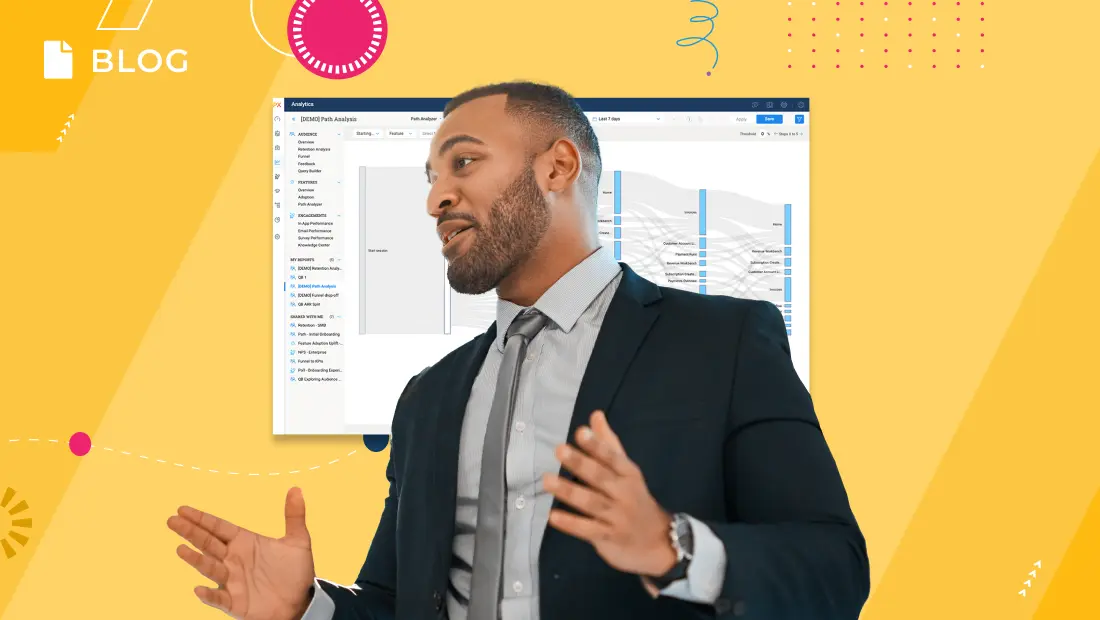It seems like every week there is a new kind of milk in the grocery store.
Apparently, our society has moved on from cow milk, soy milk, and almond milk—make way for oat milk, rice milk, and even hemp milk! And sure, the advertising campaign was clever. But it wasn’t until we tried a free sample of the product that we were convinced that this was a beverage worthy of my hard-earned dollar.
Welcome to the power of product-led growth (PLG). Whether it’s milk or software, nothing demonstrates the value of a product like the product itself. PLG is a strategy that puts the customer in the driver’s seat, where they set their own expectations and take a personal interest in the product. In effect, the customers become your sales and marketing team.
Sounds easy, right? Well, not exactly. Most organizations aren’t set up for this model of growth. They don’t have the know-how or the tools to properly execute it. Remember, the product is doing the work—so your product experience (PX) capabilities have to be on point. And the traditional SaaS tech stack may not have what it takes.
What Is a PLG Strategy?
Why are some tech stacks not up to snuff? To explain, let’s talk a bit about how PLG works. The strategy uses the product as the primary tool for customer acquisition, retention, and expansion. There are different PLG tactics for each of these different points in the customer journey.
At the acquisition stage, we most often see freemium or free trial offerings. The customer tries the product for a while, gets to know it, and then if things have gone well, upgrades to a premium version.
With retention and expansion, PLG strategies use in-product messaging and engagement to guide customers to key renewal and upselling milestones. Good PLG also uses alerts for the customer success, account management, and sales teams, letting them know when customers are ready for renewal or expansion conversations—or in danger of churning.
Why do I need a PLG tech stack?
These tactical approaches for PLG require data about customer usage to then generate actionable insights. Not only do you need to be able to handle tons of raw data, but you also need to be able to analyze it and make sense of it. If stakeholders in your organization (eg, non-data scientists like Sales) can’t access the data in an accessible format, they won’t be able to generate useful insights.
You also need a sophisticated system for engaging with customers. That means in-product messaging, email alerts, user guides, and more. It’s all about personalization—not cookie-cutter documentation.
Companies that attempt to use their traditional SaaS tech stack to execute PLG typically end up spending a lot of time and money Frankensteining workarounds that don’t work all that well, and certainly aren’t scalable.
What about metrics?
PLG is not just about managing the data, but also making it meaningful. Adopting PLG means tracking a new set of metrics.
- Conversion rate. Measures how many freemium and free trial customers convert to paid.
- Churn. What percentage of your customers leave after a certain period of time.
- Retention rate. What percentage of your customers stay.
- Customer acquisition cost (CAC). How much it costs (marketing costs, sales costs, etc) to acquire a new customer.
- Customer lifetime value (CLV). The lifetime revenue generated by a customer minus the CAC—this is your per-customer profit.
All this data is collected by your product. But your collection capabilities have to be sophisticated enough to understand not just the what, but also the why of these metrics. When and why do customers churn? What is the minimum amount of time it takes for CLV to move into the black? And do you have one centralized platform that allows you to easily manage all this information?
Core capabilities for the PLG stack
Every product is different, but there are core capabilities that will optimize PLG in almost any situation.
Analytics tools. You will want to have the most robust set of tools and metrics possible. Not because you will use all of them—that can lead to information overload. But you do want to be able to find the right metrics and be able to experiment with different metrics as needed. So you need to have a full complement of tools in your toolbox.
Digital engagements. Low-touch, automated engagements will allow you to reach the most customers with the least amount of cost and effort. And you will be able to scale more easily. Ideally, these capabilities will be built into your PLG platform.
Reporting and feedback. With PLG, you are going to be handling a lot of raw data, but most of the people who need to use that data are not data scientists (and this includes executive leadership!). The right tech stack will be able to report out results and insights beyond the Product or Customer Success teams. By the same token, the Product team needs the capability to be nimble when Sales or other stakeholders request new metrics or engagements. Make sure your tech stack has this level of agility.
Building a PLG Strategy With Gainsight
When launching a PLG strategy, Gainsight PX can help you every step of the way. Our platform combines rich product analytics and contextual user engagements into one source of truth. Build a PLG model that delivers value to your customers—and profits to your business.
